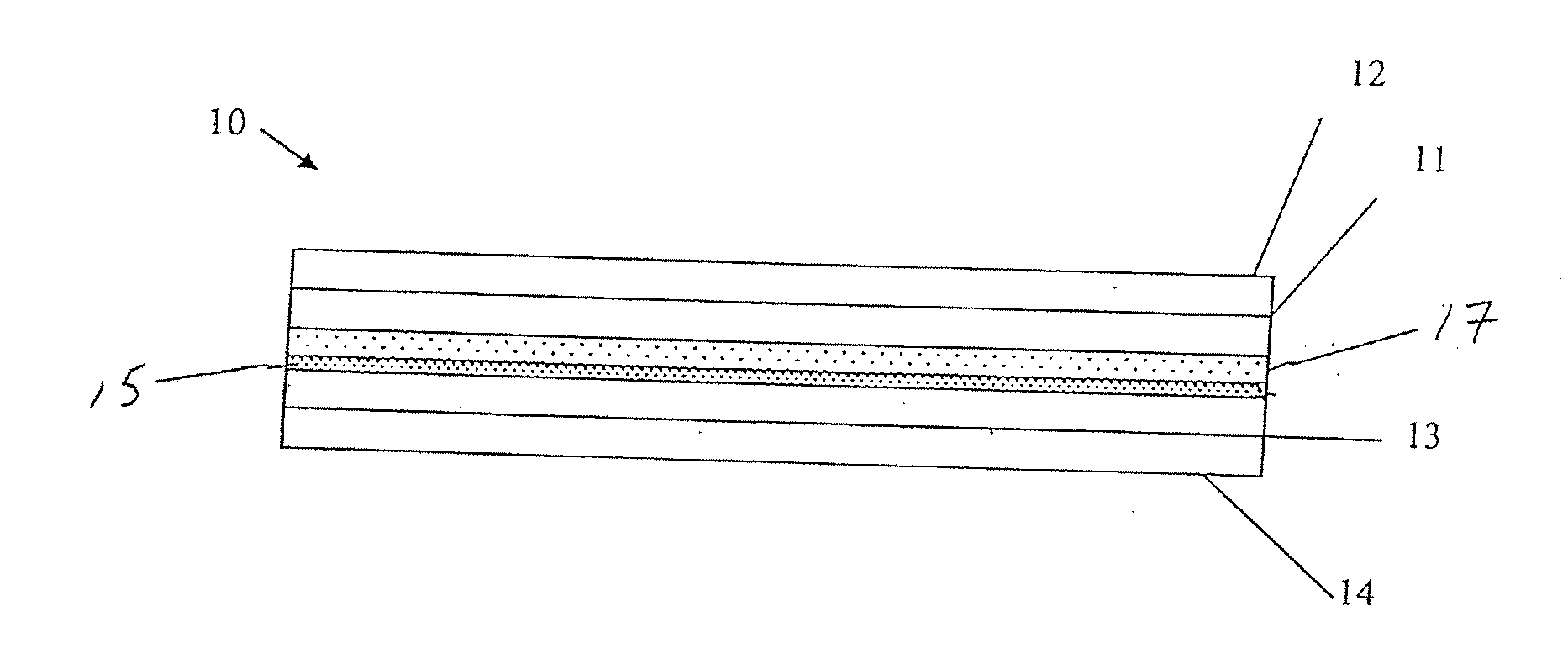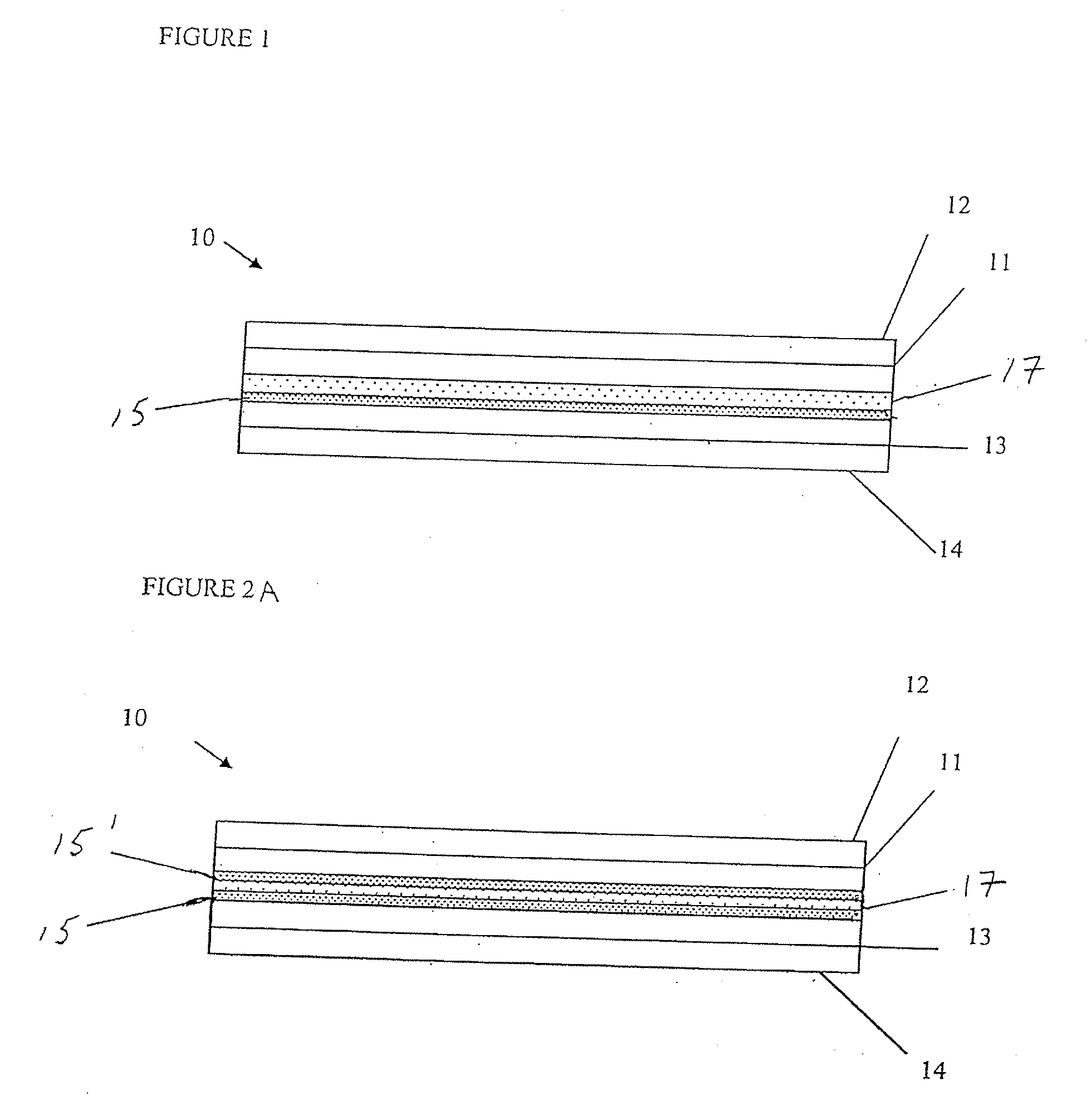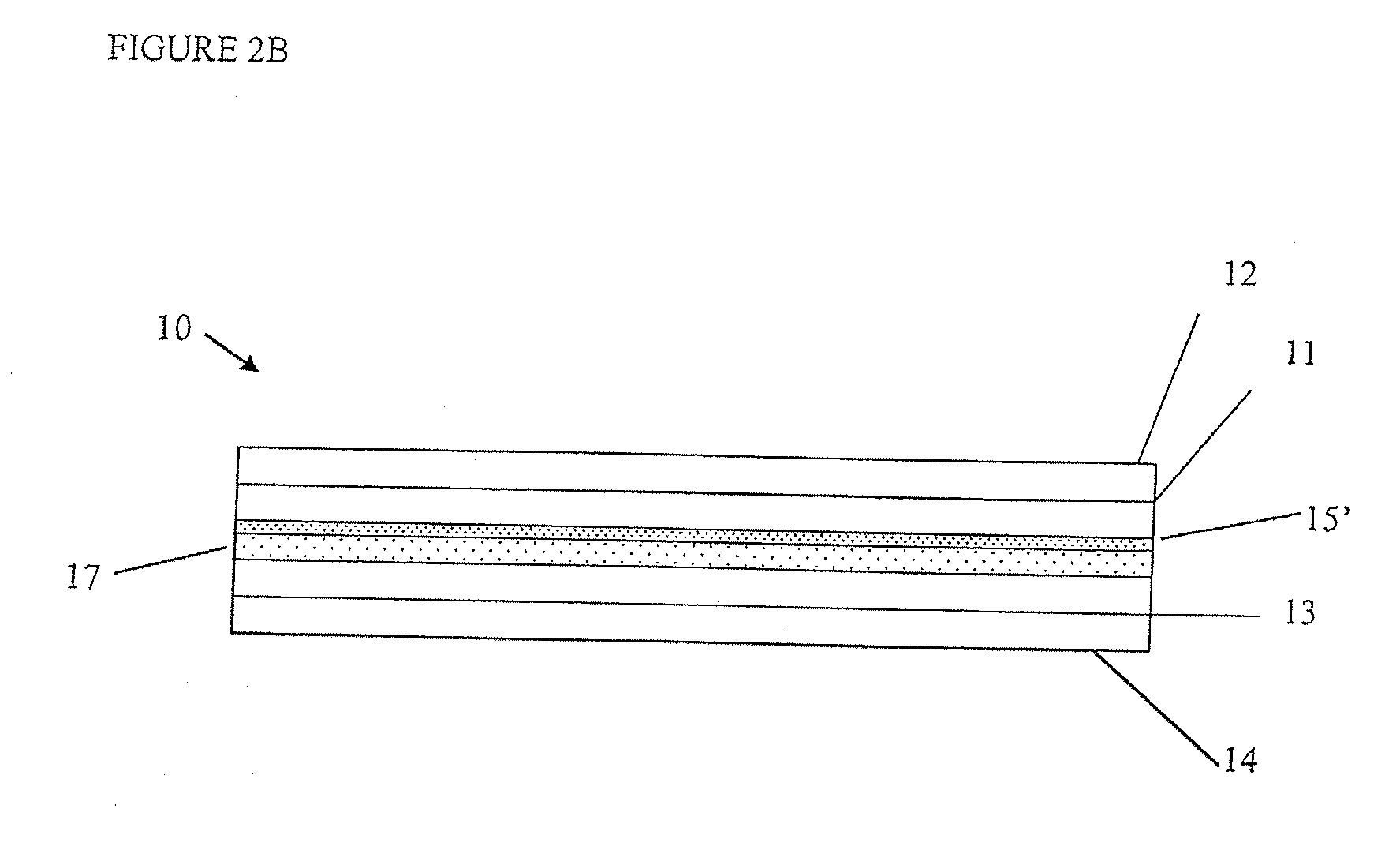Batteries having inorganic/organic porous films
a technology of inorganic/organic porous films and batteries, which is applied in the field of electrochemical cells, can solve the problems of affecting the performance of batteries, affecting the cycle life and power, and presently used separator membranes, and achieves excellent adhesion to electrodes, low cost, and high performan
- Summary
- Abstract
- Description
- Claims
- Application Information
AI Technical Summary
Benefits of technology
Problems solved by technology
Method used
Image
Examples
example 1
Coating with HVLP Spray
[0057]A 3 wt % solids loading in a 30:70 NMP:acetone solvent mixture is prepared by thoroughly mixing first PVdF (Kureha) with the fumed silica, and then adding the acetone and further mixing using an orbital mixer. The separator precursor slurry may be applied to either the anode or cathode in a series of passes with the spray gun. A thickness of approximately 20 μm may be achieved in 3-5 coats. For the dual separator approach, e.g., use of both a separator and an NCS, only about 10 μm via two passes is needed. Once the desired thickness is achieved, the electrode is vacuum dried at 80° C. for an hour and then cured at 200° C. for fifteen minutes at ambient pressure.
example 2
[0058]The precursor slurry is 5%-10% solids, prepared by the same premixing of PVdF and fumed silica prior to addition of co-solvent, and the films are dried at 100° C. with radiant heat from below and no overhead convection.
[0059]Coated electrodes have been tested in lithium ion cells and function well. 350 mAh prismatic cells incorporating only the NCS separator (20 μm) function comparably to membrane separated cells in both limited cycle life and rate performance tests. NCS separated cells show extended cycle life, high power capabilities, and excellent reproducibility for a hand-coated system.
[0060]Exemplary dual separator cell designs as pouch cells include:[0061]5μ NCS coated graphite anode / Celgard 2320 / M1 cathode[0062]5μ NCS coated M1 cathode / Celgard 2320 / graphite anode[0063]2μ NCS coated anode and 3μ NCS cathode with Celgard 2320[0064]10μ NCS coated anode with Celgard M824 (12μ thick)[0065]9μ NCS coated cathode with Celgard M825 (16μ thick)[0066]Unc...
PUM
 Login to View More
Login to View More Abstract
Description
Claims
Application Information
 Login to View More
Login to View More - R&D
- Intellectual Property
- Life Sciences
- Materials
- Tech Scout
- Unparalleled Data Quality
- Higher Quality Content
- 60% Fewer Hallucinations
Browse by: Latest US Patents, China's latest patents, Technical Efficacy Thesaurus, Application Domain, Technology Topic, Popular Technical Reports.
© 2025 PatSnap. All rights reserved.Legal|Privacy policy|Modern Slavery Act Transparency Statement|Sitemap|About US| Contact US: help@patsnap.com



